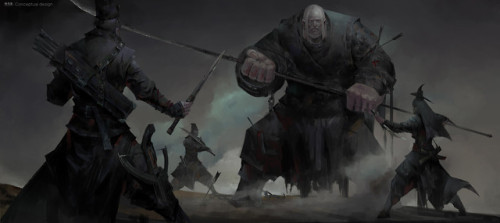Sharing several similar effects demonstrating how Muto Vim might raise the penetration score of another spell. The most likely use is a caster to alter their own spells, as demonstrated in a similar enchanted effect in a magical axe in Magi of Hermes, p.51, which uses Range: Touch. To cast upon another Magi’s spells cooperatively R: Voice is required.
These spells demonstrate an interesting potential for Magi with high scores in Muto Vim; they may be able to spontaneously alter another lower level spell for which they have poor art scores to increase its penetration.
Example scenario – the junior Magus Argento needs to cast a sleep spell on a troublesome faerie soldier.
Argento has very strong Muto and Vim arts, and while she has learnt “The Call to Slumber” (ReMe10, Ars p.151) and cast cast it easily under normal circumstances against foes without magical resistance, she believes she will not have a high enough casting total or penetration to put the faerie to sleep due to her low Rego and Mentem arts.
Argento stats: Int 2, Stm 2, Muto 12, Rego 6, Mentem 4, Vim 11, Penetration 0, which means The Call to Slumber (CtS) has a CT of 10+roll, and a spont spell has a CT of 22+ before dividing.
Fearie Soldier has a Might score of 10. So Argento needs an effective CT+Pen of 21+ to put the fae to sleep.
Argento might try to roll 12+ roll vs the Fae’s Might of 10, however unless Argento is lucky and gets 9 or over on her roll, she will not succeed. This is because the Fae’s might will require a penetration result of 11 or higher more than the spell’s level to be successful.
Argento needs to choose to either repeatedly cast Call to Slumber at the faerie and hope that she rolls 9 or higher on the dice roll, or she can opt to boost her penetration using the style of spell below, with the the knowledge that each casting will cost her a spontaneous fatigue level. Note that if Argento learns Wizard’s Auger or Wizard’s Awl (below) formulaically, she can boost many of her low level spells easily, giving her better penetration – if she had, the poor fay would be asleep in the first round. This does not add any more than +5 to +10 penetration to a spell, but that little extra is sometimes all that is needed.
Argento chooses to first cast a spontaneous version of Wizard’s Auger as a MuVi10 spell, for which she has a casting total of 25+ roll before halving the result by spending a fatigue level. Unless she botches she will succeed, and this raises the penetration of the next spell by +5.
She then casts her Call to Slumber as normal, and while she still has a CT of 12+, her final penetration for the spell is now CT+Pen of 17 + dice roll, making it far more likely that she could put the annoying fae to sleep. She only need a 4 or more on the d10 roll.
In this scenario yelling with powerful gestures also helps both styles of approach, it makes the casting without a MuVi spell far more likely, however it makes the solution with a MuVi spell almost a certainty (botches, twilight, etc).
Learned formulaically these spells add a lot of utility without requiring significant additional power or lab level. A Muto expert could also spont cast their own versions easily, and also might help their troupe if they cooperate with other Magi. Continue reading →








